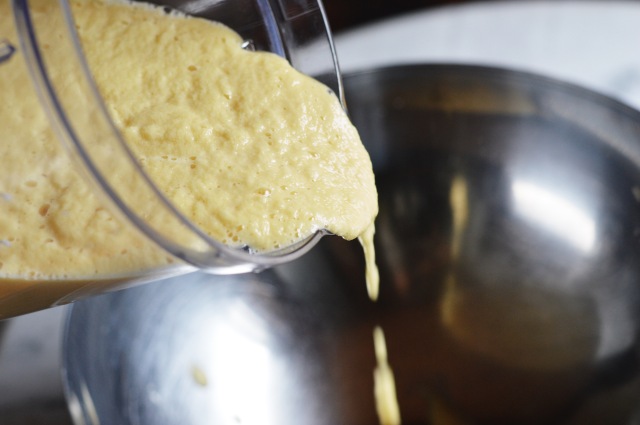
I have to admit that I am not much of a baker or a dessert maker. I think it probably has to do with the fact that I prefer salty snacks over sweet ones. Of course that doesn’t mean I don’t enjoy a tasty sweet regularly or ever say no to someone offering dessert and I definitely never decline when it’s my dear friend Jenn doing the offering.
Jenn is not only a very close friend of mine, but she is also one of the most talented bakers I know. Everything she bakes, whether it’s cookies, a cake, cupcakes, pie or anything sweet for that matter, is heavenly AND always so beautiful. She even made our wedding cake and it was divine!
Several months ago, Jenn and I attended a potluck dinner and she brought these beautiful panna cottas topped with salted caramel and caramel popcorn. Genius, right? I am not much of a caramel fan (I know it’s disappointing), but when I saw these beauties, I had to have one and it was just as good as it sounds. I am so happy to finally share Jenn’s recipe for this Coconut Milk Panna Cotta topped with Caramel Popcorn because it is not only super delicious but super easy to make. AND her Coconut Milk Panna Cotta recipe is very versatile because you can top it with so many different things such as fresh fruit, fruit coulis, candied nuts, whipped cream, etc. So enjoy and get creative!











INGREDIENTS (8 servings)
2 cups coconut milk (500 ml)
2 cups heavy cream (5oo ml)
1/4 cup white granulated sugar (30 g)
1 vanilla bean
5 gelatin sheets
For the caramel popcorn:
1 cup popcorn kernels (100 g)
1/4 cup vegetable oil (50 g)
1/2 cup white granulated sugar (60 g)
4 tbsp unsalted butter (55 g)
1/2 cup heavy cream (125 ml)
pinch of sea salt
INSTRUCTIONS
- Place the 5 gelatin sheets in a bowl of cold water so they are fully immersed and let soak for 5 minutes or so.
- In a medium saucepan, add 2 cups coconut milk, 2 cups heavy cream, and 1/4 cup sugar and heat on medium high.
- Cut open the vanilla bean and scrape the seeds out and place this and the whole vanilla bean pod in the saucepan mixture. Stir milk mixture.
- Wring out the gelatin sheets to remove any excess water and add to the milk mixture.
- Whisk the milk mixture on medium high heat for 4-5 minutes or until the sugar and gelatin sheets have dissolved.
- Discard the vanilla bean pod and pour the warm mixture into 8 dessert glasses or silicone muffin cups.
- Place the glasses into the refrigerator for at least 5 hours or until firmly set.
- In a large pot (I prefer to use a cast iron pot), add in 1/4 cup vegetable oil or enough oil to generously cover the bottom of the pan and 1 cup popcorn kernels. Place the pot with the lid on high heat. Once the popcorn kernels have come to a slow pop, take the popcorn off the heat and set aside.
- Preheat oven to 250 degrees F (95 degrees C).
- For the caramel sauce, place 1/2 cup sugar in a medium saucepan and melt the sugar over medium heat, stirring constantly as not to burn the sugar.
- Once the sugar is completely melted, add in the butter, stirring constantly for a few minutes.
- Then slowly pour in the heavy cream, stirring constantly. Allow this to come to a boil for about 1 minute while stirring. Watch out as mixture might bubble and pop.
- Take the saucepan off the heat and add a pinch of sea salt and mix well.
- In a large bowl, add in a generous amount of popcorn and drizzle caramel sauce over the popcorn. Add in more popcorn and caramel sauce until well covered.
- On a baking sheet lined with baking paper, spread an even layer of the caramel popcorn and then sprinkle with more sea salt.
- Place in the oven for 1 hour, turning the popcorn every 15 minutes and then allow to cool for at least 30 minutes before topping the panna cotta.
- When the panna cotta has set, top each portion with a generous amount of caramel popcorn and serve.
NOTES
- I used glasses to set my panna cottas as I didn’t want to have to worry about flipping them out onto dishes, which makes the silicon muffin cups extremely useful.
- You can also substitute whole milk for the heavy cream if you would like as the taste will still be delicious.


































